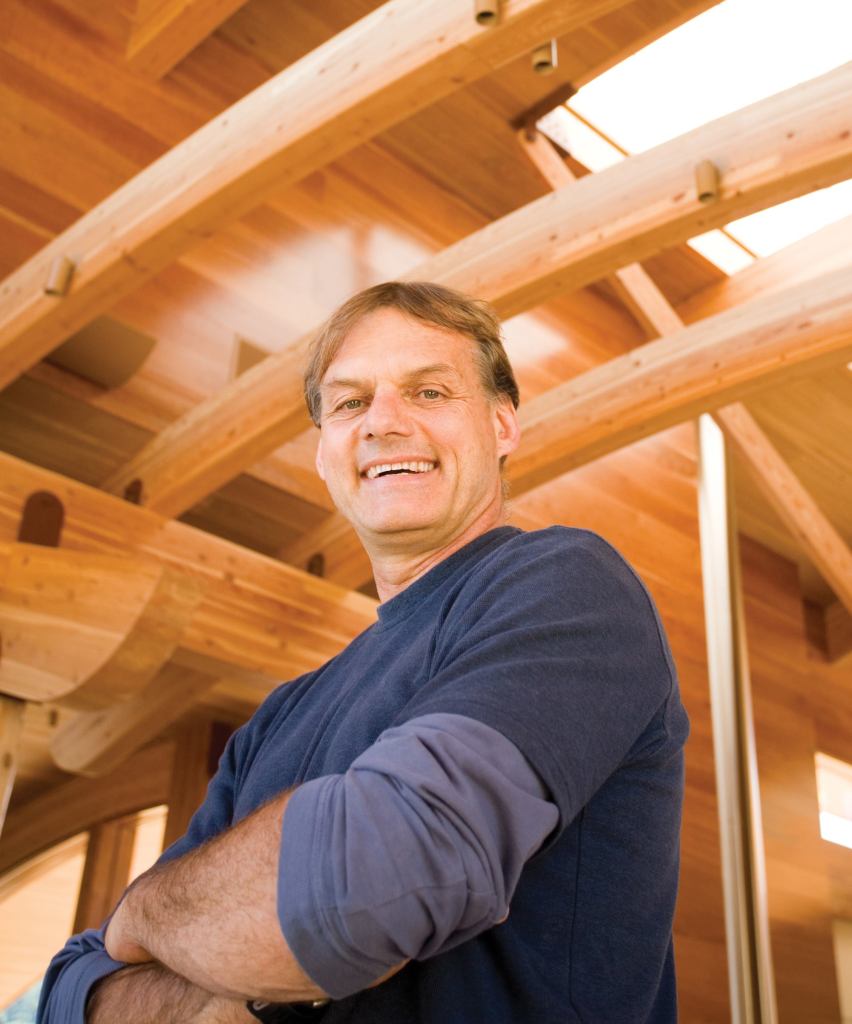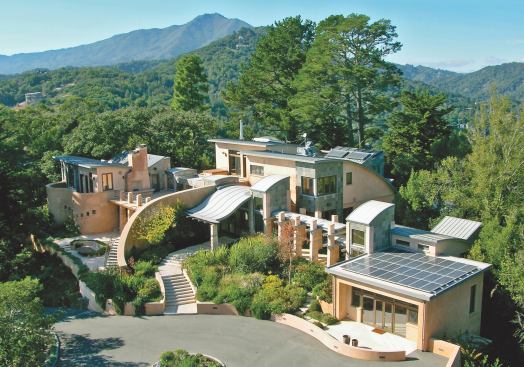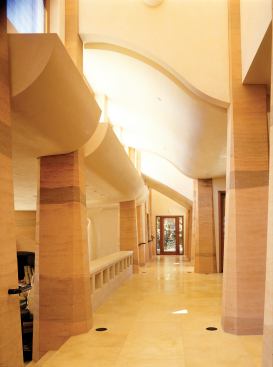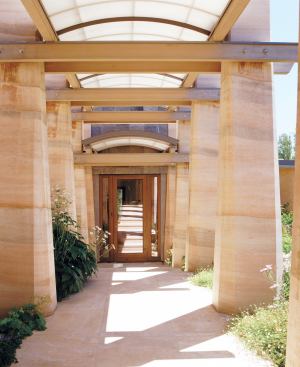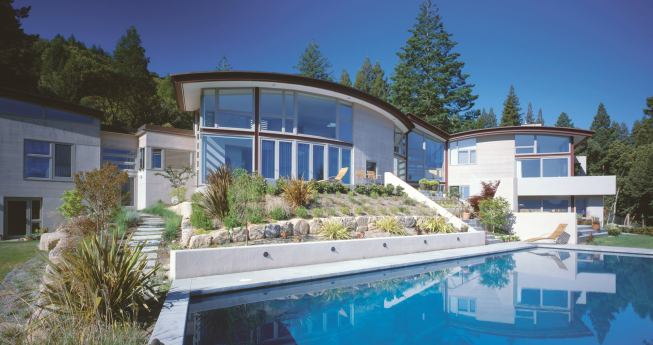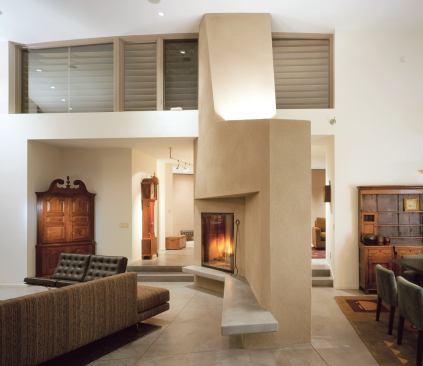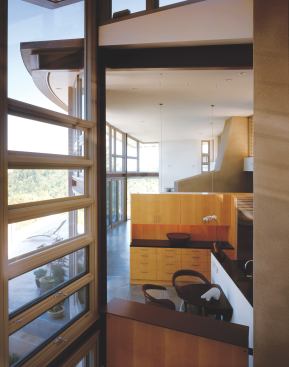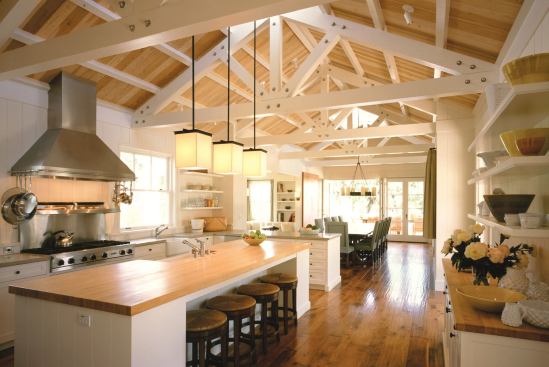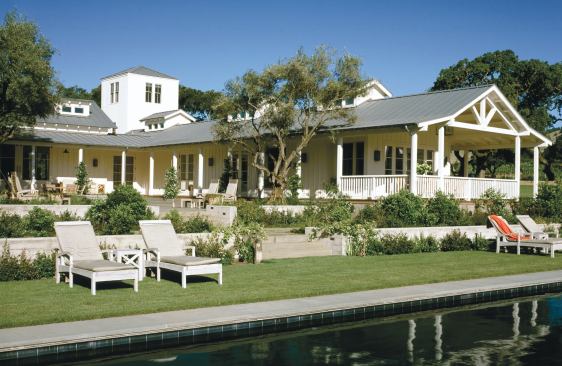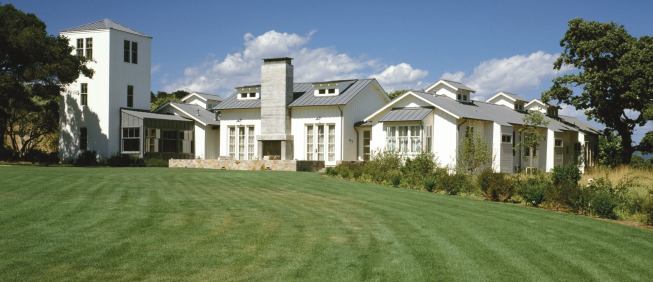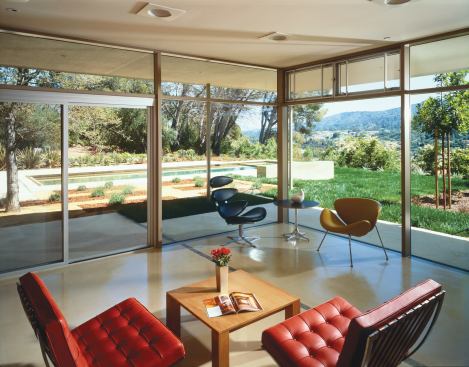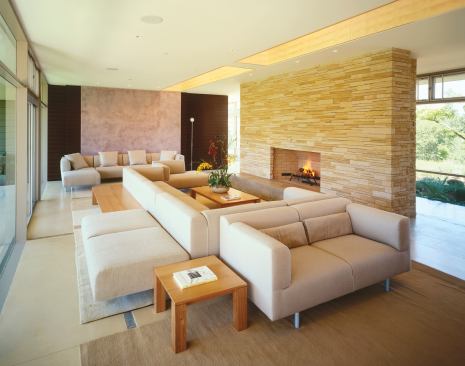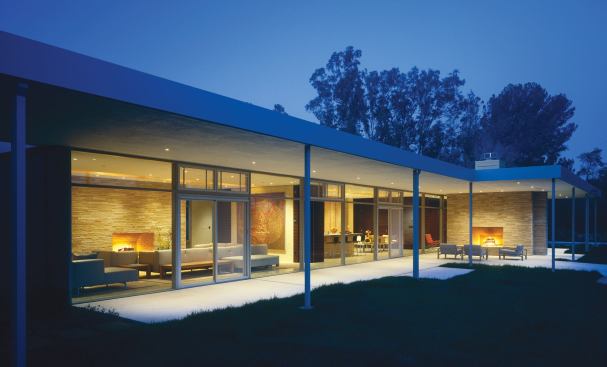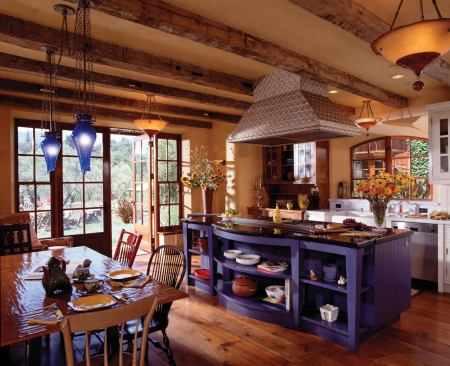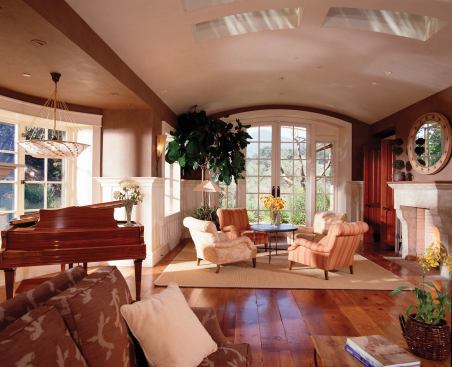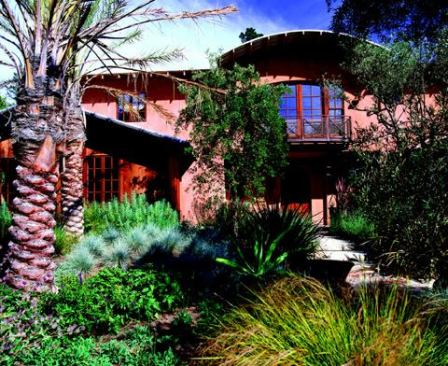Panoramic Locations
Combining sprayed earth exterior walls and rammed earth columns,…
Straw Man
“So, I was hanging out with the Grateful Dead …” We know, a lot of your stories start that way too, but David Warner happens to be telling the truth. “We did some work for them in their studio with [road manager Steve] Parish,” he says. “They were redesigning the Wall of Sound”—the band’s famous 75-ton sound system—“and they had located these hemp panels.” No surprise there, you might think. But the material, particleboard made of hemp fibers rather than wood, piqued Warner’s curiosity. He quickly grasped its potential: If fiber from an easily harvested annual crop could replace the wood in OSB panels, the environmental payoff would be enormous. “There’s about 3 to 4 million acres [of trees] a year that are felled for panels in the United States,” Warner says. “It’s not a sustainable yield. We have to find an alternative. It’s just a matter of time.” Parish directed Warner to Canada’s Alberta Research Council, which had been promoting the idea to the panel industry but finding no takers. “They saw it as just another way to lose money,” says Warner.
He and Parish thought otherwise. Partnering with Michael Klein, a former Redhorse client and co-founder of the conservation group Rainforest Action Network, they founded Above Board Technologies to produce the world’s first “tree-free” structural panel. “Instead of waiting for the green product to arrive,” Warner says, “we’re creating it.” Using wheat straw—an agricultural waste product—instead of wood fiber, Above Board has engineered an alternative to OSB and plywood in structural sheathing applications. “We are in certification testing now,” says Warner, who expects the product, TigerBoard, to hit the market in March. It’s a long road from the Grateful Dead’s studio to a panel mill in Saskatchewan, but the effort has only confirmed Warner’s initial take on the subject. “These are the fibers of the future,” he says: hemp, wheat straw, rice straw, bamboo. As we reach the limits of what the earth’s forests can sustainably provide, “They’ll do the structural duty.”
